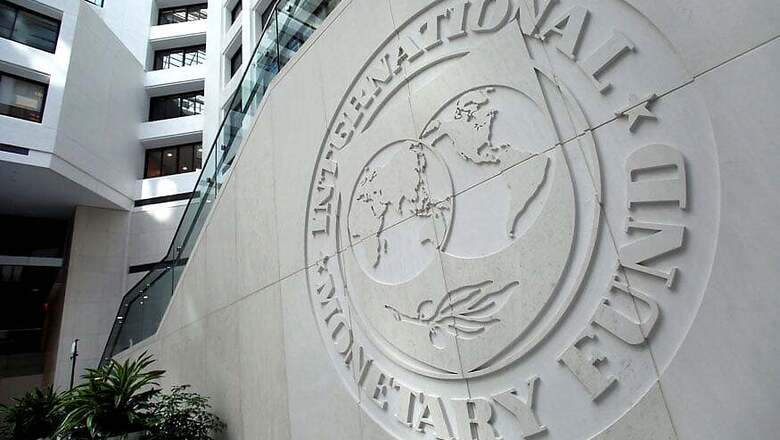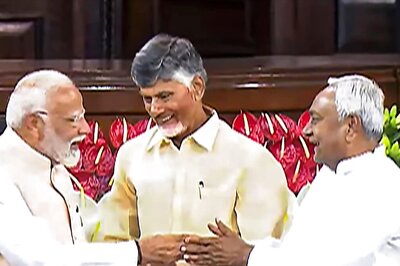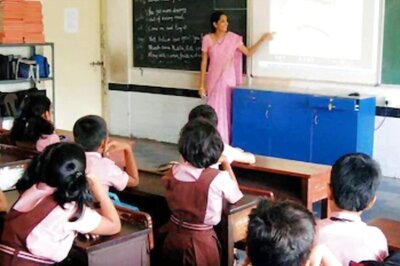
views
Washington: Led by India, South Asia is moving towards becoming center of global growth and could contribute about one-third of the world's growth by 2040, according to a latest research by the International Monetary Fund.
Notably, under the IMF's geographical division of the world, South Asia does not include Afghanistan and Pakistan. For IMF, South Asia includes India, Bangladesh, Nepal, Sri Lanka, Bhutan, and Maldives.
Under a substantial liberalisation scenario, supported by stepped-up efforts to improve infrastructure and successfully harness South Asia's young and large workforce, the region could contribute about one-third of global growth by 2040, argues the IMF paper 'Is South Asia Ready for take Off? A sustainable and inclusive growth agenda,' to be released in New Delhi on Monday.
"Looking at it both from the growth trajectory that we see and the development elsewhere in Asia, we see South Asia as moving towards being much more of center of global growth," Anne-Marie Gulde-Wolf, Deputy Director, Asia and Pacific Department, IMF told PTI ahead of the release of the report.
Previewing some key aspects of the IMF research, Gulde-Wolf noted that based on demographic trends, more than 150 million people in the region are expected to enter the labour market by 2030.
"We have a region with a massive potential for demographic dividend. (This is), a region that has been seen over the recent past significant growth spurt," she said.
This young and large workforce can be South Asia's strength, if supported by a successful high-quality and job-rich growth strategy, leveraging all sectors of the economy in a balanced way. The IMF paper says.
Although policy recommendations remain country-specific, for many South Asian economies these should include: further progress in revenue mobilisation and fiscal consolidation; greater trade and foreign direct investment (FDI) liberalisation; and investment in people, the paper notes.
What can India do to harness the potential demographic dividend and to avoid pitfalls of rapid growth that we have seen in other areas, she asked. The IMF is looking at sustainable growth, avoiding massive ecological problems that could be associated with this kind of imbalanced prose.
That's why IMF sees India needing a multipronged approach that leverages the advantages that the country already has, she said. "The country has already an excellent tertiary education system, built a on high value-added services. So, in no way, should any strategy devalue that aspect," she said.
But it needs to be complemented with areas like manufacturing sector, wherein India is below what would one expect from a country with that level of development, she said adding that the issue is how to involve private sector to increase the manufacturing base.
India, she noted, needs to create a better environment for private sector growth which looks at a product market, labour markets, land is a particular issue and obviously some of the impetus has to come from foreign direct investment, the top IMF official said.
"It has to be supported by creating a basis of labour force that is able to use the opportunities that would be created here. While maintaining the quality of the tertiary education, more needs to be done to broaden the quality of primary and secondary education," she said.
Together with this, there is need to reduce red tape obstacles and maybe more generally the footprint of the state, including in the financial sector, Gulde-Wolf said.
Bangladesh, which has had a very impressive development history in the recent past, mainly based on the garment industry, needs to diversify its economy, she said.
Noting that Bangladesh has a very low revenues to GDP ratio, low debt, but also very low investment in infrastructure, she said it is critical for this country to increase the infrastructure that would be needed for expansion of the private sector.
Among other countries Nepal, Maldives and Bhutan each one has their own issues, but the common issue that really binds them together is the need to unleash more private sector groups.
Sri Lanka, she noted, is in many senses, slightly different because it's benefiting less from the, demographic dividend because it's already reached its maximum. The island nation does not have the same growth history as the other South Asian nations.
Responding to a question, Gulde-Wolf said subject to implementation of the IMF recommended reforms, India's income level on PPP basis would be reaching about 45 per cent of the US income level and it would one third of the global growth.
Observing that it is always difficult to make a long-term forecast, she said it is important to show what the potential is and what the payoff over time off reforms can be.
India has a significant potential, but there is need of a significant reform, she said, adding that these reforms need to be implemented to set the trajectory. If you lose time by delaying this reform, it will take more time to catch up to where you are. And the time window is not very big, the IMF official said.
"Reforms need to be implemented. We still see that the slow down at this stage is mainly cyclical, but the most recent numbers that have come in are lower than we have expected," Gulde-Wolf said.

















Comments
0 comment